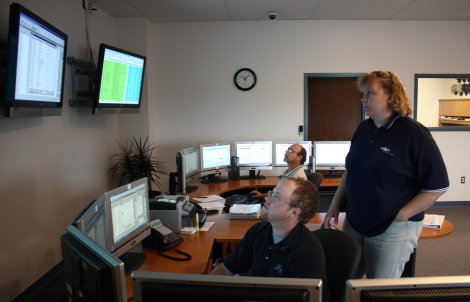Smart Choice: Renewable Energy Drives Business Growth
 | Kelley Welf, Communications Director |

 | Kelley Welf, Communications Director |
Minnesota celebrates the 10th anniversary of its Next Generation Energy Act this year. This bipartisan legislation to achieve 26.5 percent of our energy from renewable sources by 2025 sent a clear signal that Minnesota desired clean energy to protect our air and water, and it is open for business. It worked.
This legislation sparked a renewable energy sector in Minnesota that has not only helped the state deliver low-cost clean energy to consumers; it is also helping grow a thriving business community across the state. In all, there are 209 wind and solar businesses in Minnesota, according to a 2014 Department of Employment and Economic Development report. The number grows to 772 businesses for the entire clean energy sector, which includes energy efficiency, bioenergy, wind, solar and smart grid.
But, just what are these businesses? Everyone can imagine the wind turbine technician scaling the inside of the tower to reach the nacelle, and even dangling from a safety harness to inspect the blades. And, it’s easy to envision a solar panel installation. But what else is there? What do these businesses do, and what kinds of jobs do these companies offer that don’t require a safety harness or an office that’s 400 feet in the air?
First, wind and solar projects need to be developed, which requires planning, design, and financing. That means businesses that focus on banking, legal services, accounting, insurance, environmental studies, and engineering to design access roads, placement of foundations, and conduct modeling to optimize the number and location of turbines.
There are over 8,000 component parts to a wind turbine. Those parts need to be manufactured. Minnesota has a very strong manufacturing sector. According to data from the American Wind Energy Association database, Minnesota ranks sixth in the nation, with at least 20 active facilities in the state that support the wind industry. These businesses make things like: generator and drivetrain components, bearings, fasteners, sensors, switches, fiberglass and other coatings.
Our state is also home to the top two wind and solar construction companies in the nation -- Blattner Energy and Mortenson Construction. There are lots of construction-related supply-chain businesses that are needed to build a project, such as: gravel and cement contractors, excavation and heavy equipment rental companies, hardware and tool retailers, and welding companies, to name a few.
As the industry matures, new businesses are coming up with other technologies to support the industry. For example, a few companies have developed technology that enables the FAA-required red lights on top of the towers to stay off until aircraft are within a specified distance. After the plane passes overhead, the lights will turn off again, preserving the night sky. Pretty neat!
On the education front, the Minnesota DEED website states that more than 5,700 degrees are granted annually in engineering, mechanic and precision production fields to support wind energy. Wind and solar projects need to be installed and maintained, too. Minnesota’s community colleges have answered the call with wind technician and solar installation programs at Riverland Community College, Minnesota West Community and Technical College, and Century College.
Subscribe to our newsletter for the latest on energy & our work
Transportation is another important business that supports the industry. Minnesota is home to specialized trucking companies that are equipped to transport the long turbine blades. Our world-class network of interstate highways, railroads and the Port of Duluth enables wind-related machinery, turbines and other materials to be transported into and out of the state. The Port of Duluth has been ranked by logistics experts among the top 10 in North America for transporting wind turbine component parts.
 The future is bright for renewable energy businesses. According to a Navigant
report, approximately 35,000 megawatts of wind energy will be added by 2020,
nationwide. Looking ahead, the industry
will drive $85 billion in economic activity through 2020, through investments
in new wind projects, manufacturing, construction and operations expenditures,
and tax payments. Good state and federal
policy encouraging renewable energy development has undoubtedly contributed to
the robust development of the clean energy sector in Minnesota, which according
to Clean Jobs
Midwest, contributes over 54,000 jobs.
The future is bright for renewable energy businesses. According to a Navigant
report, approximately 35,000 megawatts of wind energy will be added by 2020,
nationwide. Looking ahead, the industry
will drive $85 billion in economic activity through 2020, through investments
in new wind projects, manufacturing, construction and operations expenditures,
and tax payments. Good state and federal
policy encouraging renewable energy development has undoubtedly contributed to
the robust development of the clean energy sector in Minnesota, which according
to Clean Jobs
Midwest, contributes over 54,000 jobs.
Businesses that create or provide products or services that help Minnesota’s economy transition toward renewable sources of energy are definitely a smart choice for Minnesota.
Sign-up to receive our e-newsletter.
Photo: EDF Renewable Energy